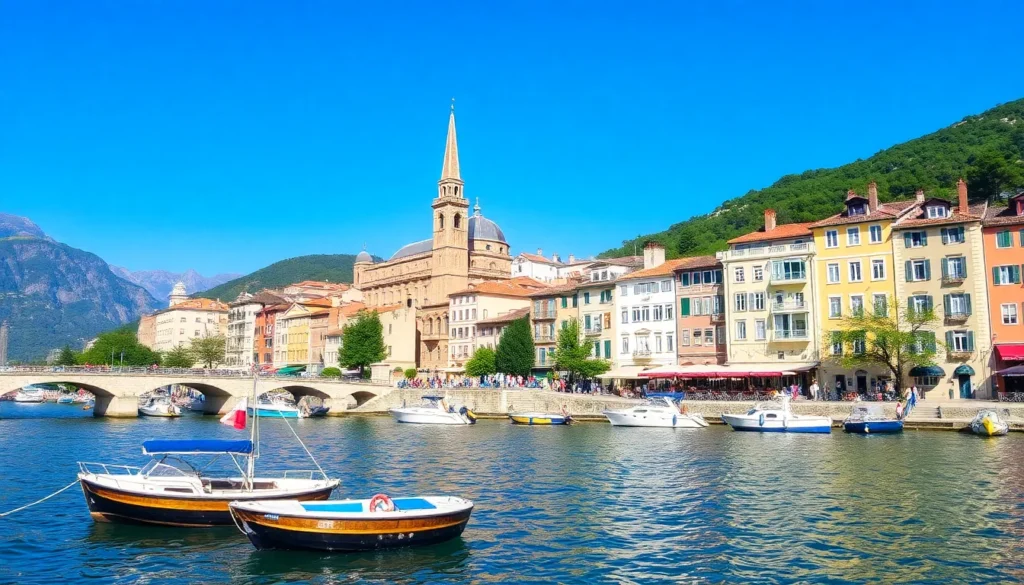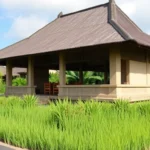Travel Tips for Exploring the Balkans Without Making Mistakes

- Understanding the Balkan Region
- Recommended Duration for Travel
- Best Time to Visit the Balkans
- Top Destinations in the Balkans
- Cost of Traveling in the Balkans
- Language and Communication
- Safety Considerations
- Travel Documentation and Insurance
- Local Currency and Payment Methods
- Recommended Tours and Excursions
- Bonus Tips for Traveling the Balkans
Traveling to the Balkans can be one of the most enriching experiences of your life. This region, often referred to as "the other Europe," is filled with rich history, stunning landscapes, and diverse cultures that capture the hearts of those who visit. If you’re planning a trip to this exquisite part of the world, the following comprehensive guide is packed with essential tips and insights that will help you navigate the Balkans like a pro. This balkans travel guide will ensure you make the most of your journey.
Understanding the Balkan Region
The Balkans is a region in Southeast Europe known for its complex history and cultural diversity. Countries like Croatia, Bosnia and Herzegovina, Serbia, Montenegro, Albania, and North Macedonia each have unique traditions, languages, and cuisines. Understanding the history of the region, particularly the impact of the Yugoslav Wars in the 1990s, is essential. This knowledge will deepen your appreciation for what you see and experience during your travels.
Before embarking on your journey, take some time to read about the region’s history, especially the events surrounding the breakup of Yugoslavia. Documentaries and articles can offer valuable insights, allowing you to connect more meaningfully with locals and the places you visit. This is an important aspect of any balkans travel guide.
Recommended Duration for Travel
When it comes to exploring the Balkans, the more time you have, the better. Ideally, you should plan for at least a month to truly experience the region. However, if you’re short on time, a two to three-week trip can still be rewarding. Focus on two to three countries to make the most of your visit. For instance, a popular combination is Croatia, Bosnia, and Montenegro, each offering varied experiences—from stunning coastlines to historical cities.
For a well-structured itinerary, consider the optimized travel plans available online, which can help you maximize your time without feeling rushed. Consulting a balkans travel guide can provide useful itineraries tailored to your interests.
Best Time to Visit the Balkans
The ideal months for visiting the Balkans are May, June, September, and October. During these times, you’ll find pleasant weather, fewer tourists, and more reasonable prices. Summer months can be hot and crowded, especially in popular coastal destinations like Dubrovnik and Kotor. If you prefer a quieter experience, aim for the shoulder seasons when both the weather and prices are more favorable.
Top Destinations in the Balkans
Choosing the best places to visit in the Balkans can be subjective, as each country has its own unique offerings. However, here are some highlights:
- Croatia: Famous for its stunning coastline and historic cities, such as Dubrovnik and Split.
- Bosnia and Herzegovina: Known for its rich cultural heritage and landmarks like the Stari Most in Mostar and the capital, Sarajevo.
- Montenegro: A paradise for nature lovers, featuring the breathtaking Bay of Kotor and stunning national parks.
- Albania: Offers beautiful beaches and a fascinating blend of cultures. Don’t miss the ancient city of Berat and the Albanian Riviera.
Regardless of where you choose to go, you’re bound to find something that resonates with you. This is why having a thorough balkans travel guide can enhance your experience.
Cost of Traveling in the Balkans
Generally, the Balkans are more affordable compared to Western Europe. However, prices can vary significantly from country to country. For budget travelers, here’s a breakdown of what to expect:
- Accommodation: Dormitory beds range from €10-25, while private rooms can cost between €30-60.
- Transportation: Traveling by bus or train can cost around €3-5 per hour, with alternatives like ridesharing being popular.
- Food: Dining out can be quite economical, with local eateries serving meals for as little as €5-10.
Make sure to budget wisely and consider using hostel kitchen facilities to save on meals.
Language and Communication
English is commonly spoken in tourist areas, but learning a few basic phrases in the local languages can enhance your experience and endear you to locals. Simple phrases like "thank you" (hvala), "hello" (zdravo), and "goodbye" (doviđenja) go a long way. Additionally, having a translation app can be helpful, especially in areas where English is less common.
Safety Considerations
Traveling in the Balkans is generally safe for tourists. However, as with any destination, it’s important to remain vigilant. Petty crime can occur, especially in crowded areas or during public events. Be cautious of your belongings and avoid displaying valuables. Additionally, familiarize yourself with any local customs or regulations, particularly in more rural areas.
If you have concerns about street dogs, rest assured; most are friendly and not aggressive. Nonetheless, it’s wise to remain cautious, especially if you’re not familiar with the area.
Travel Documentation and Insurance
While many Balkan countries don’t require a visa for short stays, it’s essential to carry your passport, as border checks can occur frequently. Ensure your passport is valid for at least six months beyond your planned departure date.
Travel insurance is highly recommended, particularly for medical emergencies. While some EU countries offer the European Health Insurance Card, it does not cover all Balkan nations, so having comprehensive travel insurance will provide peace of mind.
Local Currency and Payment Methods
Different countries within the Balkans use various currencies. While some, like Croatia and Montenegro, use the Euro, others have their own currencies, such as the Serbian Dinar and the Albanian Lek. It's advisable to carry some local cash, especially for small purchases in rural areas or markets where card payments may not be accepted.
For convenience, consider using a travel-specific debit or credit card with no foreign transaction fees. Options like Revolut or N26 are popular among travelers for their favorable exchange rates and low fees.
Recommended Tours and Excursions
While exploring independently is rewarding, consider booking tours for a more structured experience. Some recommended excursions include:
- Slovenia: Day trip to Lake Bled, Postojna Cave, and Predjama Castle.
- Croatia: Free walking tours in Split or Dubrovnik, and visits to Plitvice Lakes National Park.
- Bosnia: Free tours in Sarajevo and excursions to Mostar and Blagaj.
- Montenegro: Guided tours of Kotor and boat trips in the Bay of Kotor.
Bonus Tips for Traveling the Balkans
Here are a few extra tips to ensure a smooth travel experience:
- Stay connected: Consider getting a local SIM card for easy internet access. Many options are available at airports and local shops.
- Respect local customs: Understanding the region's historical context and cultural influences will deepen your travel experience.
- Pack accordingly: Weather can vary, so check forecasts for each destination and pack layers.
With these insights, you’re well-equipped to embark on an unforgettable journey through the Balkans. From the stunning natural landscapes to the rich cultural tapestry, this region promises an adventure that will leave a lasting mark on your heart. This balkans travel guide serves as a valuable resource to enhance your experience further.
For more travel tips and inspiration, you may find this video helpful:





Deja una respuesta